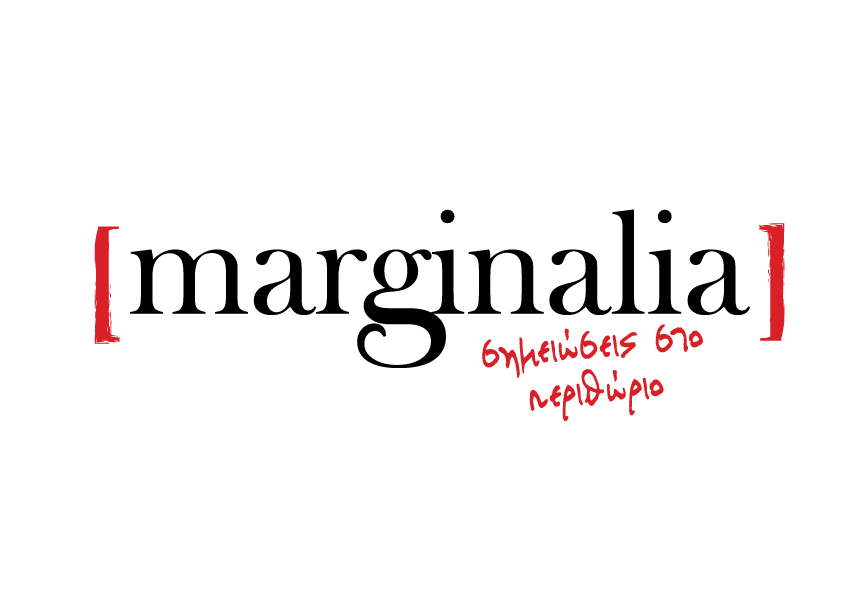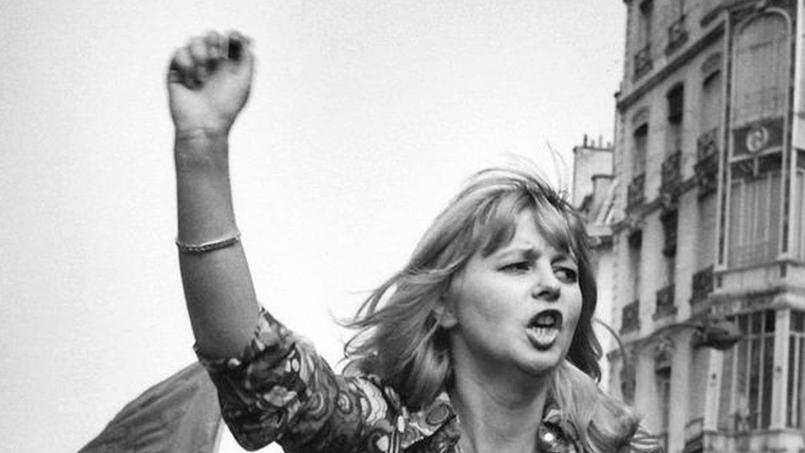Feminism in France. From May ’68 to Mitterrand
Claire Duchen
London and New York: Routledge & Kegan Paul, 1986
Feminism in France, researched and published in the early 1980’s, is an illuminating introduction to one of the most influential feminist movements to emerge in the aftermath of May 1968. Clair Duchen continues to inspire today with her lucid description and analysis of the Mouvement de Libération des Femmes (MLF) covering the period between the conflict-ridden 1970s up until the early 1980s. Written from a participant observer’s perspective the book successfully links complex feminist theory with ordinary women’s everyday experience, bringing together the author’s long preoccupation with the “concept of the feminine” and feminist political marginality. Feminism in France makes for an analytically insightful and yet accessible reading.
Paris-centered, the book did not aspire to provide an exhaustive picture of the French women’s movement but shows the variety of approaches and experiences within the MLF. In essence this is a tale of two, hostile women’s liberation movements, the group Psychanalyse et Politique (Psychoanalysis and Politics), known as Psych et Po – which in 1979 would register the MLF name and logo as their own property – and the rest of the movement. After Mitterrand’s election the latter focused their energies on developing relations with a Socialist government and political institutions that had turned rather friendly to women’s issues . While born on the heels of May ’68 the French feminist movement was not invented just then. From 1791, when Olympe de Gouges – a playwright, abolitionist and early feminist – wrote the Declaration of the Rights of Women and the Female Citizen, until August 1970, when the name Mouvement de Libération des Femmes was first used to describe a protest event at the Arc de Triomphe, French women had been involved both with revolutionary socialist movements and reformist work. By the early twentieth century, feminism in France was largely trying to address two issues: women’s allegiance to class or sex and the question of women’s suffrage. After winning their right to vote in 1944, and up until May ’68, women pursued both extra-parliamentary and parliamentary politics, despite the great disparities between political rights on paper and women’s experiences inside political parties. The events of May ’68 worked as a catalyst. Women glimpsed the possibility of change while coming to the realization that a male-dominated revolution would not lead to their emancipation. The early 1970s saw a proliferation of publications and groups –forming and dissolving at a rapid pace – protest events designed to shock and disturb, infighting and splits. There were as many feminists as there were groups, as Duchen suggests, all responding differently to the same issues: the relation between patriarchy and capitalism, the question of feminine difference, and the question of heterosexuality and lesbianism.
Non-aligned feminism and other currents
Conflicts and disagreements led to the formation of at least three different currents. Women already involved politically through various groups of the Left would argue that socialism and women’s liberation were mutually constitutive, emphasizing the material conditions of working class women’s lives and the congruence between patriarchy and capitalism in effecting their oppression and exploitation. Another current, largely expressed by the Psych et Po group, consistently stressed the psychosexual dimension of women’s oppression, adopting a psychoanalytical approach to the constitution of “femininity” mainly based on Jacques Lacan’s work. Socialists were largely organized in local groups, initially seeing themselves as the local avant-garde with the responsibility to engage and enlighten women at local markets, children’s playgrounds, factories and firms. Psych et Po, on the other side, created autonomous female spaces – a publishing company, bookshops, group meetings, a series of magazines – where the feminine would emerge and grow. According to the group, as well as other feminist theorists, the chronic internalization of masculinity had never allowed for women to truly know who they were. Psych at Po promised to bring the feminine into existence.
Out of the group Féministes Révolutionnaires emerged another current organized in small collectives, individual research and collective actions averse to any ready-made global analysis and theory. Suspicious of known political organizations and practices as well as the uniformity and hierarchical organization of Psycho et Po, this “non-aligned feminism” – the kind that Duchen feels most comfortable with – was always diverse in its goals and projects, encouraging women’s direct participation and action. While concerned with formulating analyses of women’s oppression, a task undertaken by a number of collectives such as the one organized around the journal Questions Féministes, this current rejected any understandings of the feminine outside the social. In direct opposition to Psycho et Po, the collective argued “…that there is no such thing as a direct relationship to the body: to say that there is, is not subversive, because it denies the existence and power of social forces – the very forces that oppress us, oppress our bodies” (p.41). Committed to the belief that “the personal is political,” collective work, and equality, the non-aligned feminists sought to break the barriers between public and private life, redefining politics in the process.
Nowhere would the differences between the more closed, coherent worldviews and the more open experimental ones become more clear than in the question of motherhood and abortion, which was brought to the center of public attention in 1971 with the Manifeste des 343 – also known as the “Manifesto of the 343 Bitches.” . Written by Simone de Beauvoir and signed by many famous French women, the text advocated for reproductive rights, protesting the law that made abortion illegal in France. Directly connected to either class or women’s oppression, the issue of abortion affected every aspect of feminist analysis in the movement’s first few years. Socialists condemned motherhood and adopted abortion as a measure against capitalism. For Psych et Po’s it was women’s answer to male occupation of the female body. Non-aligned feminists would soon turn their attention towards a number of other issues related to motherhood. Most importantly, they tried to disentangle cultural conditioning from women’s “real” desire for motherhood – a task that led to the acceptance of the impossibility to disassociate the social from the unconscious. They turned to exploring and sharing feelings and experiences associated with pregnancy and motherhood at large.
Vive la Différence? A politics of difference and a different politics
Philosophical thinking has always had wide currency in France. An introduction to the French feminist movement would be worse than incomplete without at least a brief overview of semiology, deconstruction, or Lacanian psychoanalysis and their shared preoccupations with identity and difference, exclusion and repression, and the role of language. Duchen pays due attention to the French insistence on “difference,” either in the Psych et Po sense of an innate, undiscovered femininity, or in the sense of changing and redefining political activity. Still she raises due concerns about whether “difference” can lead to “a political and theoretical impasse, to a political ‘ghetto’ shared by the happy few and divorced from the rest, using language and ideas in such a specific way that no one else can understand… ignoring the material conditions of women’s lives” (p. 102). Without dismissing the interconnection between philosophy and politics – clearly highlighted by the events of May ’68 – and aware of the possible strategic implications of feminine “difference” for feminist politics, Duchen discusses the works of Roland Barthes, Michel Foucault, Jacques Derrida, Jacques Lacan, Hélène Cixous, Luce Irigaray and Julia Kristeva, and the different ways in which each attacked the authority of meaning and the systems of domination that reinforce political authority.
If Barthes’ and Foucault’s works have influenced French feminist thinking more indirectly by way of setting up the intellectual scene in France more broadly, Derrida’s and Lacan’s effects have been direct and pervasive. Derrida’s critique of Western metaphysics – the belief in a reality external to discourse and language that can be described and represented or the precept that we can grasp and understand things for what they are – set the ground for feminist thinking to upset the oppressive-to-women order installed by metaphysics. His notion of différance – words and signs can never be fully understood without an appeal to their opposites from which they differ, presence in contrast to absence, speech versus writing, man versus woman and so forth – takes aim at the hierarchies hidden in language that these opposites involve. Derrida’s belief in no fixed meanings, absolutes or stable identities constitutes an affront to our binary conceptual system. Lacan similarly argued that individual is inhabited by society through language, traditionally privileging the masculine (phallus), in the construction of meaning. In the socialization process we internalize what Lacan calls a “Symbolic Order,” a series of signs, roles and rituals that become meaningful only in relation to each other. The promise of psychoanalysis for feminists consisted in uncovering this symbolic order, deeply phallogocentric and to uncover the feminine (unlike Lacan who suggested that woman is beyond the conceptual imagination of phallic discourse and therefore cannot be pinned down)..
One way of looking at the French feminist theoretical enterprise, according to Duchen, would be to see it as the examination of the construction of woman as object of discourse – and the reconfiguring of this discourse to create women, a new object, with women themselves as the reason behind the discourse. Building on Derrida’s or Lacan’s logocentrism and phallogocentrism, the works of Cixous, Irigaray and Kristeva challenge the inevitability of patriarchy in discursive and conceptual terms as well as in terms of social structure. Kristeva in her analysis of the feminine identifies first its absence from the Symbolic (as it is in Lacan’s view) and locates it instead in what she calls the “semiotic, chronologically anterior to, and synchronically transversal to, the sign, to syntax, to denotation and to meaning. Kristeva’s understanding of language also as a process rather than structure, with meaning constantly created and recreated, opens the possibility for destroying the oppressive identities of masculine and feminine. Writing against the monopoly of the phallic, Irigaray also tried to claim the feminine while uncovering the seemingly neutral stance of language, the social sciences or philosophy, also exploring women’s sexuality as its possible location. Cixous, alongside Irigaray, would argue that there is a feminine libidinal economy in which female sexuality is self-sufficient while holding that women can think in non-phallic ways. Women’s alterity should be expressed in writing, according to Cixous.
Any effort to upset patriarchy lay in women’s examination of their relation to their own sexuality, to other women, to language and writing. Developing a political strategy based on women’s alterity was of great importance to Psych et Po that saw in writing, multiplicity and sexual separatism – lesbianism was not a term used by the group – the way to liberation. Multiplicity, which is at the base of all otherness and of feminine alterity may begin at the level of women’s anatomy, libido and jouissance – a form of women’s pleasure or sexual rupture, according to Cixous. It may mean resistance to the one-ness and masculine discourse. or resistance to organization and hierarchy of structure. However, Duchen is skeptical about the concept of the feminine. While in favor of a discursive revolution as an integral part of a political struggle, she finds the beginning of any analysis with bodily experience and anatomy problematic, because any attempt to know our bodies and our jouissance passes through language, which implicates social experience and knowledge. Along with other French radical and materialist feminists Duchen fears that “the concept of the feminine could merely replace one conceptual prison by another” (p. 99). She calls for an examination of these implications of difference for feminist politics.
Duchen argues for a different politics that can also account for the politics of difference. She explores the strategic implications of feminine difference for feminist politics while anchoring her discussion on the feminist experience of two political parties, the Socialist Party (PS) and the more marginal Parti Socialiste Unifié (PSU). MLF was generally apprehensive about any involvement with conventional politics, yet women who joined the Communist Party (PCF), the PS or the PSU chose to fight for power through party politics, trying to organize both autonomously and through the male-dominated political arena. But Communist feminists were unable to stay in the party if they differed from its line-analysis of women’s “condition.” The PS and PSU provided more opportunities for feminists to create a space of their own, despite the hostility generated by the feminist current within the PS, and despite the marginality of the PSU. Duchen agrees with Huguette Bouchardeau – the National Secretary of the PSU (which received 1.1% of the vote in the 1981 presidential election) that even if took decades before feminists exerted any significant influence on the major political groups, the goal should be to achieve systematic, if only indirect, intervention. The fear that organization and structure would undermine multiplicity and the dynamism of the movement has always been present in MLF. Yet, “it is also paradoxically this very refusal that leaves their theoretical and practical achievements open to co-optation,” according to Duchen. “Lack of formal organization makes it possible for others to step in and claim feminist actions and ideas as their own” (p. 121). Duchen sees hope in the combination of autonomous structures and feminists acting, despite the enormous challenges, inside the male-dominated political structures.
Feminism in Mitterrand’s France
For feminists, the questions of autonomy, dependence, political strategy and power permeated the Mitterrand period discussed in the last chapter of Feminism in France. Feminists, including the Psych et Po, had actively supported the non-Communist Left during the campaign. The establishment of a new Ministry for Women’s Rights after Mitterrand’s election undoubtedly signaled a new beginning, despite criticisms that the ministry was only a skin-deep gesture of appeasement to feminism. The Ministry adopted a very moderate, reform-based approach to issues of contraception, encouraged the creation of Feminist Studies in higher education, published and distributed a Guide to Women’s Rights, and supported a number of projects such as the revision of women’s representation in school books and advertising. In the meantime access to power within the PS was entirely controlled by the party hierarchy, and feminists were alienated.
The change of government in 1981 opened up a series of new questions for the MLF, as it had to consider its position towards reform and its own form of organization. A number of arguments were made for setting up feminist structures that would be as autonomous as possible yet would maintain strong links to public institutions like ministries or universities. The argument was not to replace the existing small groups, but to add to them. Duchen sees the benefits of multiplicity and diversity of opinion and practices in the works of small and informal groups, and in the different interests in varying fields of activity such as the trade unions, political parties or the workplace. However, she also stresses the importance of representative formations for the shakeup of public identification and in order to avoid co-optation and isolation.
Duchen concludes her book with excerpts from a ten-and-one-half-hour taped conversation she had with various women, evaluating and reflecting on the early days of the MLF and its future; thus complementing again – as she does throughout the book – the analytical with the immediacy of lived experience. Reflecting Duchen’s feminism, always grounded on rigorous thinking and a deep sense of solidarity, Feminism in France, not without its limits, continues to engage new generations of readers opening a window to French feminist theory and activism.





